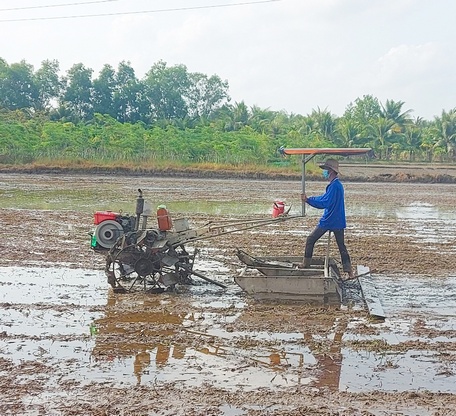 |
| In the 2024 Summer-Autumn rice crop, the whole province plans to plant 35,000 hectares. |
According to the agricultural sector, facing the increasingly severe impacts of climate change, it is necessary to minimize damage during production, especially during the dry, drought and saline seasons.
In recent times, the agricultural sector has focused on educating people about weather developments during the production season; thereby proactively preventing and avoiding harmful effects on production and life, and proactively responding to drought and saltwater intrusion.
In the 2024 Summer-Autumn rice crop, the agricultural sector has recommended that farmers arrange their crops in a way that focuses on avoiding planthoppers, simultaneously in each area. Areas at risk of salinity should plant earlier or later to avoid salinity at the end and beginning of the crop.
In addition, the agricultural sector also recommends that farmers use 80% of high-quality rice varieties, certified varieties or equivalent, and limit the cultivation of low-quality varieties. In particular, the main rice varieties with wide adaptability, good domestic consumption and export: OM5451, OM4900, OM 6976, Dai Thom 8, OM18, ... Additional rice varieties that adapt well to drought and salinity: OM 2517, OM 9577, OM 9955 ...
Having just planted 4 hectares of Summer-Autumn rice on March 20, Mr. Nguyen Van Ba (Phuoc Hau commune, Long Ho district) said: "Before planting rice, I also followed the recommendations of the agricultural sector, plowed and buried straw, cleaned the fields carefully, and followed the planting schedule to avoid planthoppers and drought."
Mr. Nguyen Thanh Vu (Trung Hieu commune, Vung Liem district) also said: “This summer-autumn rice crop, I have arranged machines to be on standby to pump water into the fields and canals. It is currently the hot season, after the winter-spring rice harvest, the rice fields are also dry, keeping water in the fields not only softens the soil but also kills weeds. On the other hand, storing water also prevents drought from occurring and is enough to pump water to irrigate the rice fields.”
According to the Department of Crop Production and Plant Protection, this year's complicated hot and dry weather conditions are very favorable for pests and diseases in the rice seedling stage, especially thrips, which will cause serious damage. Thrips damage leaves by curling up at the tip, wilting, shrinking and turning yellow. This is especially serious in dry fields.
In addition, the risk of organic poisoning in rice fields due to hasty sowing and planting can lead to increased disease rates. In addition, it is necessary to pay attention to rats in the newly sown rice stage, weedy rice, onion mosquitoes in the tillering stage, whitefly, brown spot disease, leaf blight in the flowering stage, golden apple snails, etc.
For the 2024 Summer-Autumn rice crop to be successful, according to Mr. Nguyen Vinh Phuc - Head of the Department of Crop Production and Plant Protection (Department of Agriculture and Rural Development), for areas preparing to sow, after harvesting Winter-Spring rice, farmers need to thoroughly clean the fields of rice husks, rice husks and weeds around the edges of the fields, plow thoroughly and ensure a quarantine period of at least 14 days.
In particular, areas where summer-autumn rice is planted without ensuring a quarantine period need to spray Trichoderma and apply phosphate fertilizer immediately after final tillage to limit organic poisoning. Lime treatment, pumping and draining soil washing for areas at high risk of organic poisoning.
In particular, strengthen the monitoring of salinity, recommend appropriate crop production in drought and salinity conditions. For rice that is susceptible to damage at the seedling and flowering stages, if the salinity is above 1‰, do not let water into the field; when using water to mix with spraying chemicals, non-saline water (less than 0.8‰) should be used.
At the same time, it is estimated that the area infected with weedy rice tends to increase rapidly through the rice crops. Therefore, farmers are advised to prepare the land carefully before sowing to avoid damage to the upcoming Summer-Autumn rice yield.
In addition, it is necessary to monitor and detect early the appearance of objects such as golden apple snails and thrips; it is necessary to proactively visit the fields regularly, closely monitor the development of planthoppers, and recommend that farmers should only use special drugs when planthoppers are in the 2nd-3rd instar and the planthopper density is >3,000 individuals/m2. It is necessary to use one of the anti-molting drugs to spray, and be careful not to combine with broad-spectrum drugs to avoid the risk of planthopper outbreaks at a later stage.
According to the Department of Agriculture and Rural Development, in the 2024 Summer-Autumn rice crop, the whole province plans to sow 35,000 hectares, divided into 3 main phases: Phase 1 is 4,000 hectares (from January 4 to March 5) sowing in areas along National Highway 54 of Tra On district, Binh Minh town and mound land along Mang river in Tam Binh district, along Tien river in Mang Thit and Vung Liem districts. Phase 2 is 25,000 hectares (from March 19 to April 18), this is the main sowing phase, distributed in most localities in the province. Phase 3 is 6,000 hectares (from May 1 to 31) sowing the remaining areas, distributed in the central area, low-lying areas, areas at risk of salinity, areas that have not been actively pumped and drained, and areas without complete dykes. However, it also depends on the actual conditions of each locality and especially needs to have reasonable calculations based on the situation of drought, salinity, rain and storms to build a strict crop calendar according to each local ecological sub-region. Currently, the 2024 Summer-Autumn rice crop in the whole province has been planted on about 9,200 hectares, of which over 7,300 hectares are in the seedling stage. |
Article and photos: NGUYEN KHANG
Source










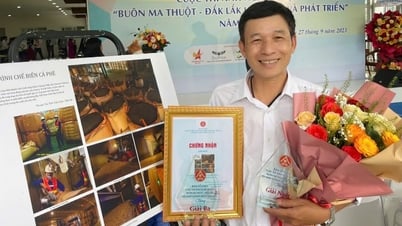









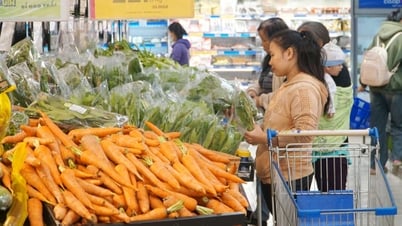





































![[Maritime News] Wan Hai Lines invests $150 million to buy 48,000 containers](https://vphoto.vietnam.vn/thumb/402x226/vietnam/resource/IMAGE/2025/6/20/c945a62aff624b4bb5c25e67e9bcc1cb)









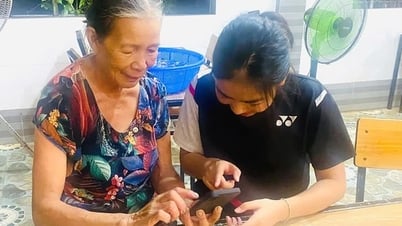




![[Infographic] Party Committee of the Ministry of Culture, Sports and Tourism: Marks of the 2020 - 2025 term](https://vphoto.vietnam.vn/thumb/402x226/vietnam/resource/IMAGE/2025/6/22/058c9f95a9a54fcab13153cddc34435e)



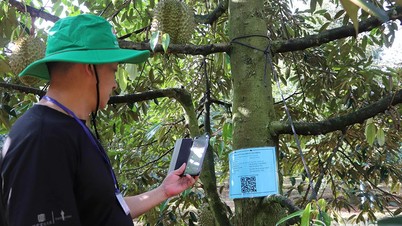


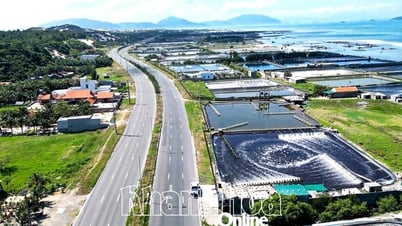


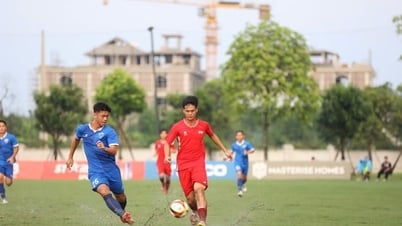












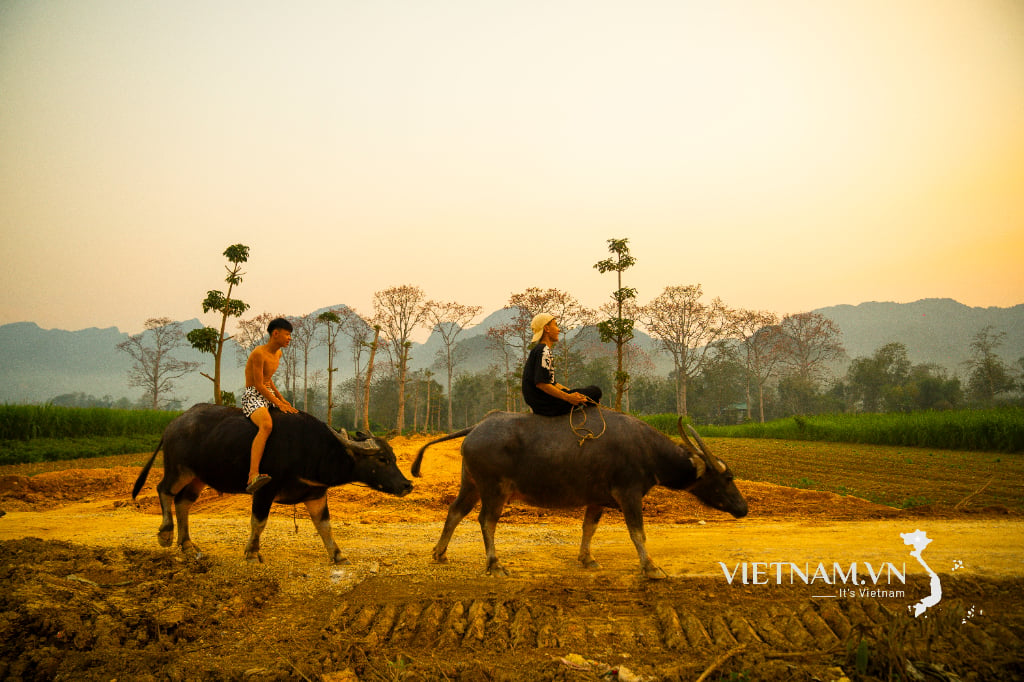


Comment (0)